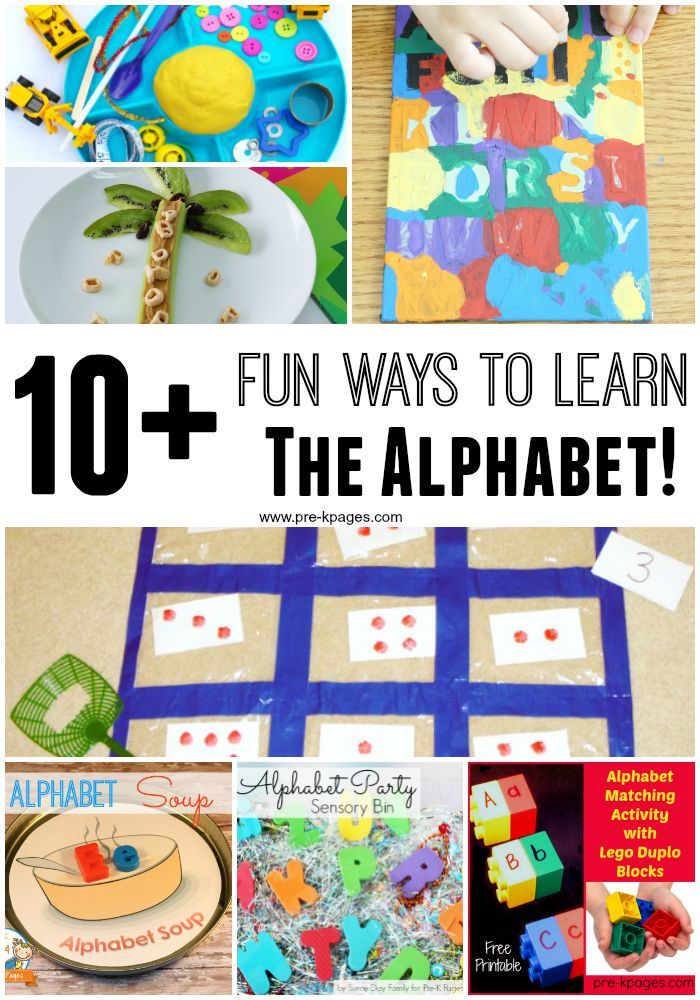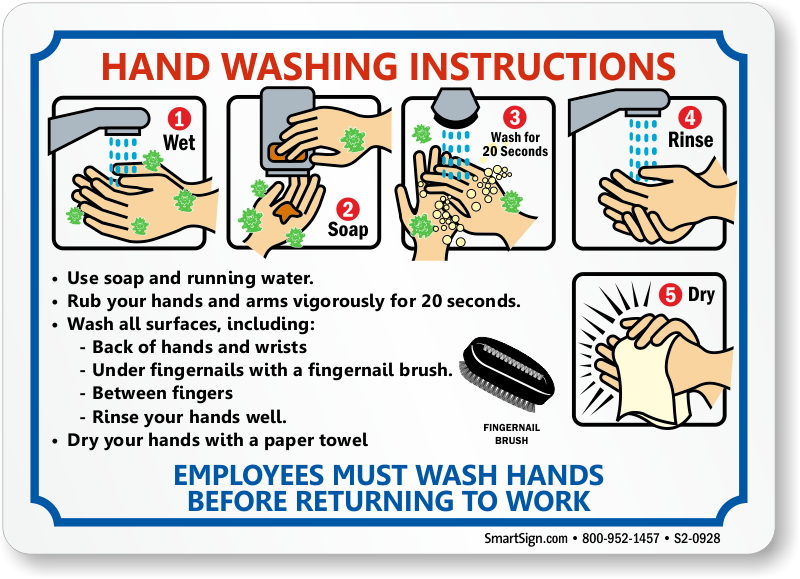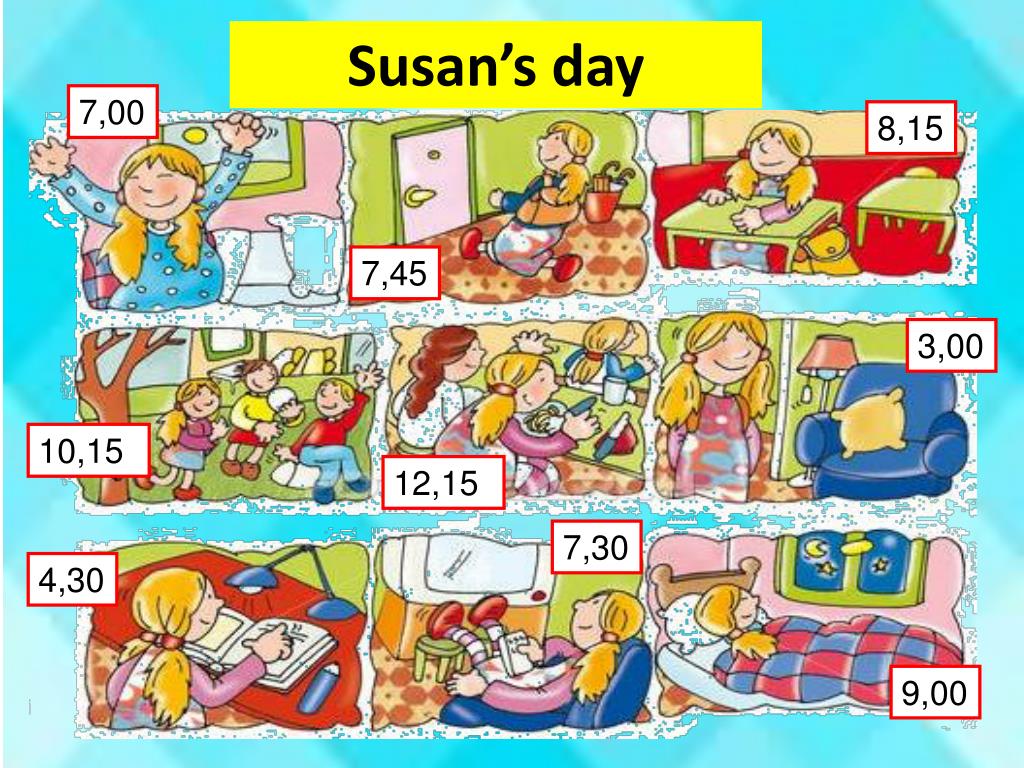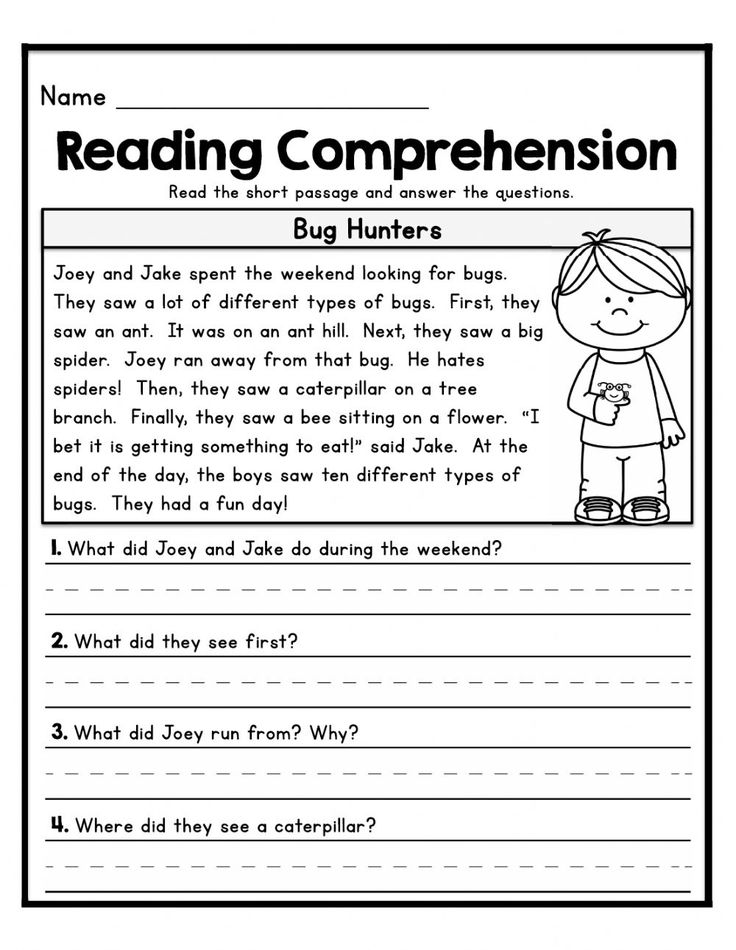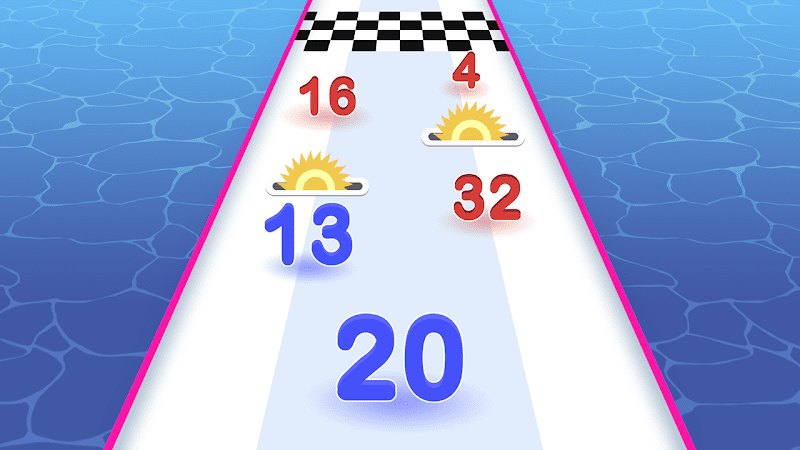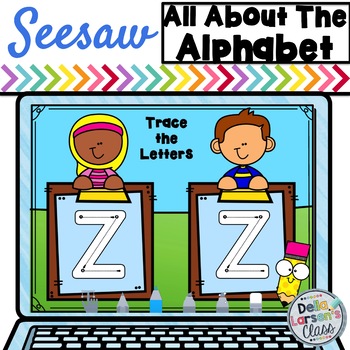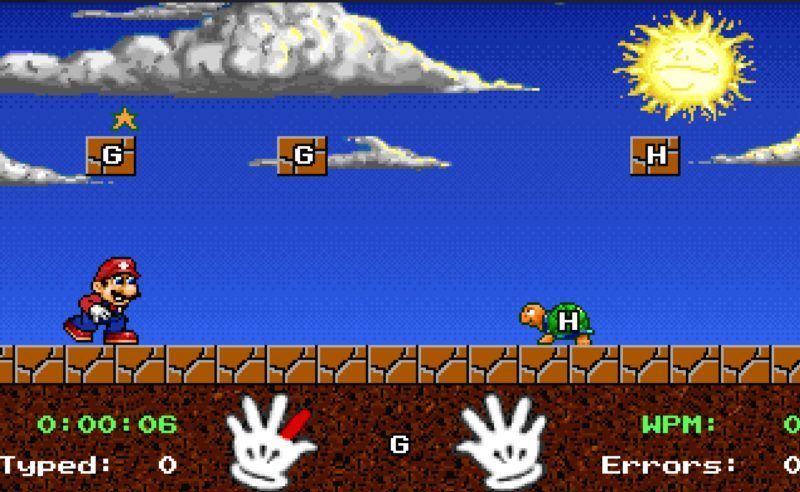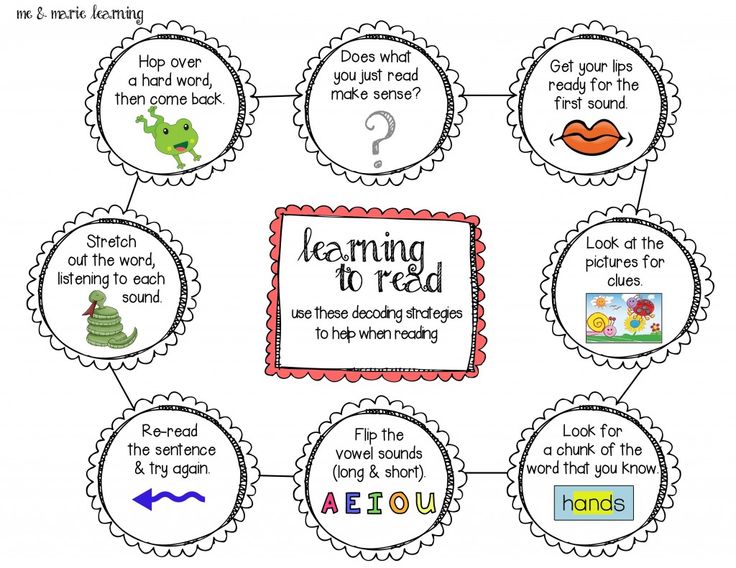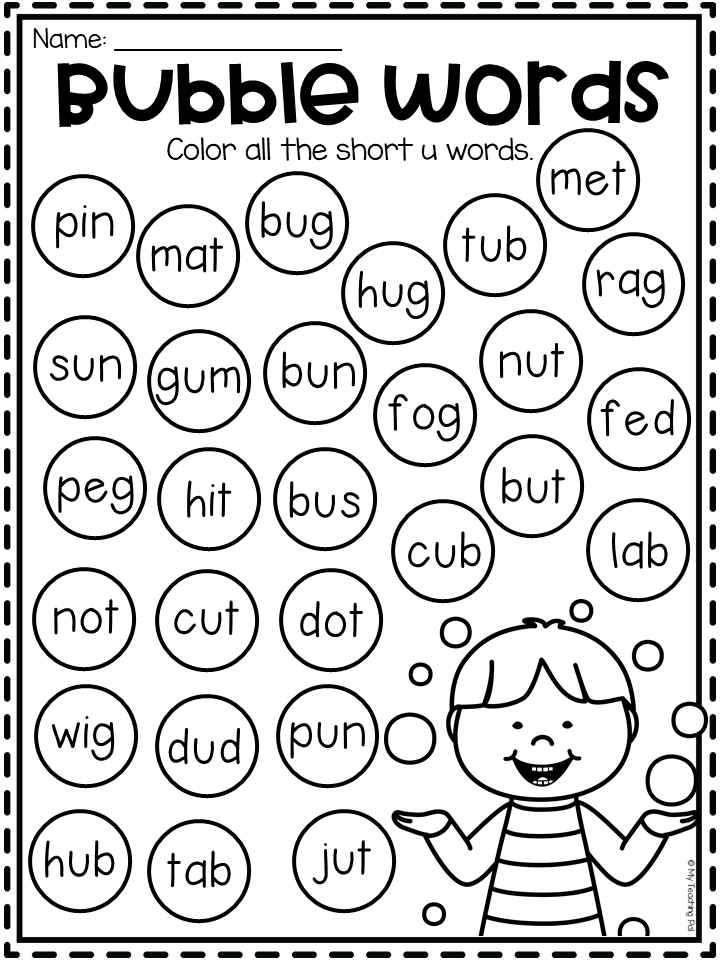Fun ways to teach alphabet
26 Easy, Fun Alphabet Activities That Give Kids the Practice They Need
Alphabet activities make learning your ABCs more fun. There are so many ways to practice your ABCs, you might be able to do one alphabet activity a day for a year without repeating. We’ve gathered over 25 super fun alphabet activities so kids can play and learn every day.
1. Write letters on dried beans
Large dried white beans are inexpensive to purchase and easy to write on. Grab a sharpie and write all the upper and lower case letters on them. Then put each set in a pile (or baggie) and ask your kids to match them.
2. Letter sort with sticky notes
Write individual letters on sticky notes and then place them all over your house or just on every stair in a staircase. This practice game has a lot of variations—all tied to sorting. Ask kids to sort by:
- lowercase
- uppercase
- letters in their name
- straight lines (H)
- curved lines (c)
- both curved and straight lines (B)
- consonants
- vowels
For even more practice: have them sort their finds into ABC order, match lowercase letters to uppercase letters, and then, find a way to sort them that’s new.
3. Write letters in shaving cream
Squirt shaving cream on a table and let your kids write letters in the cream. Smoothe it out to erase and start again. Bonus: their hands and your table will be cleaner than ever!
ADVERTISEMENT
Source: Rose and Rex
4. Bend letters with pipe cleaners
Pipe cleaners have always been a trusted source of good fine motor practice as well as a fun craft resource. Now use them to have kids create uppercase and lower case letters.
Learn more: make and takes
5. Make sensory ABC bags
This one is great because you can change up what you put in here and even move to sight words. You’ll need a gallon bag with a ziplock top. Add letters written on pieces of paper, magnetic letters, scrabble tiles, or anything else you can think of with letters. Then fill the bag with rice or oatmeal and seal it. Kids dig through the rice through the bag to find the letters.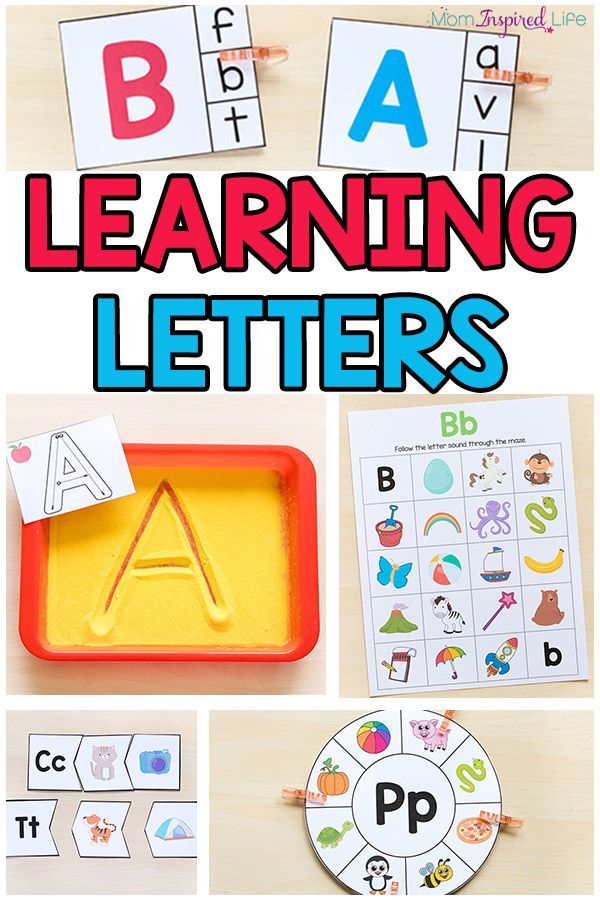 When they find them, they write down the letter they find until they locate all 26 letters of the alphabet.
When they find them, they write down the letter they find until they locate all 26 letters of the alphabet.
For more sensory ideas: Little Bins Little Hands
6. Find invisible letters with watercolors
This is a classic. Using a white crayon, draw letters on a piece of white paper. Give your kids watercolor, let them paint the paper, and watch the letters appear.
Learn more: Gift of Curiosity
7. Play musical alphabet
Set up letters in a big circle on the floor. You can use magnetic letters or just write them on index cards. Put music on and have your child walk around the circle to the music. When the music goes off, your child tells you the closest letter. Expand on it: ask your child to name three things (colors, animals, etc) that start with that letter.
8. Sponge the alphabet
Cut sponges into letters and use them for sponge painting letters or playing in the tub.
Learn more: Learning 4 Kids
9.
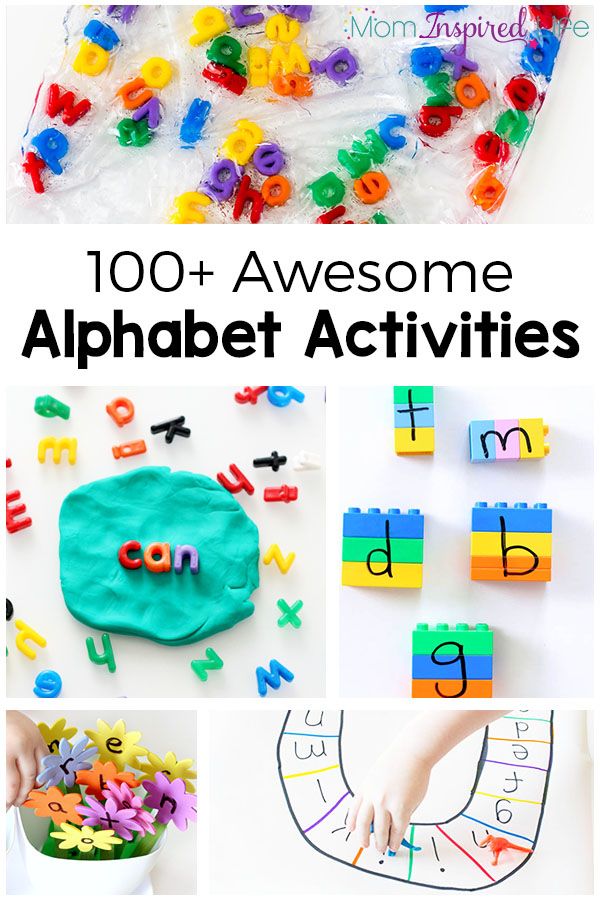 Put together name puzzles
Put together name puzzlesWrite the upper and lower case letters in a name and then cut them apart in a simple zigzag. Mix up the letters and ask a child to match them up and put them in the right order.
10. Make letters from nature
Find the alphabet right outside. Choose natural objects that already look like letters, or arrange them to look like them.
To learn more: Right Brained Mom
11. Eat your ABCs
We know from Alphabet Soup that eating your ABCs is plain old fun. So think of all the ways you can practice the alphabet at mealtime. Pancakes can be made into letters, jello can be cut into letters, and noodles can be used to make letters (just to name a few).
Learn more: Parent Map
12. Go on an alphabet scavenger hunt
The fun part about this for grown-ups is that there is no prep. Tell kids to go find objects that start with each letter of the alphabet. To make this game take longer, designate spots for them to bring each item back—one at a time.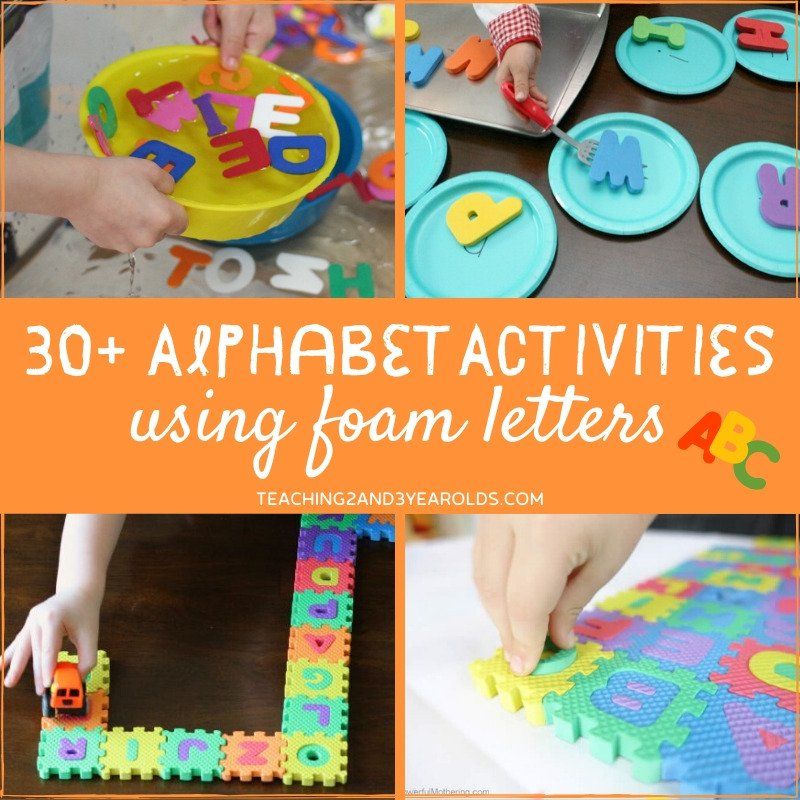 Every item must be approved before they can move on to the next. This allows for fewer meltdowns at the end when an item is deemed inaccurate.
Every item must be approved before they can move on to the next. This allows for fewer meltdowns at the end when an item is deemed inaccurate.
13. Make your own ABC book
Personalizing the ABCs helps kids process and retain their learning. One of our favorite alphabet activities starts by creating a book out of 26 pieces of paper and staples or hole punches and a ribbon. Have kids write an uppercase and lowercase letter on each page. Finally, have them draw or cut out pictures of things that start with each letter. Voila!
Learn more: Teach Mama
14. Create ABC popup books
Use the following tutorial video to learn how to make different kinds of pop up pages. Then, create a page per week for 26 weeks for each letter. At the end, use a glue stick to glue them all together to make an ABC popup book!
15. Stamp letters in playdough
Roll out playdough and push letter stamps right into the dough. This is both tactile and great for practicing ABCs.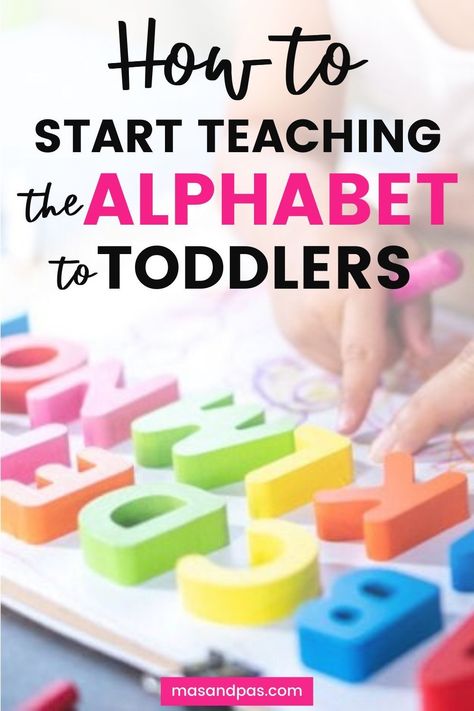
Learn more: I can teach my child
16. Make tactile letter cards
There’s lots of research (and experience) to support the value of using all the senses to learn. Making these tactile alphabet cards will be fun and have lasting benefits.
Learn more: All About Learning
17. Trace letters in spices
This one combines touch, smell, and sight. It gives you an opportunity to talk about what we uses spices for as well. Put the bottle in front of a child and have them write the spice name in the spice to make things a bit more challenging.
Source: Frog in a Pocket
18. Study a letter of the week
Many PreK and Kindergarten classes do a letter of the week, and for good reason. Teachers all share that instant recognition of letters and practice writing them is so important for learning to read. Doing alphabet activities for one letter each week reinforces knowledge and recollection.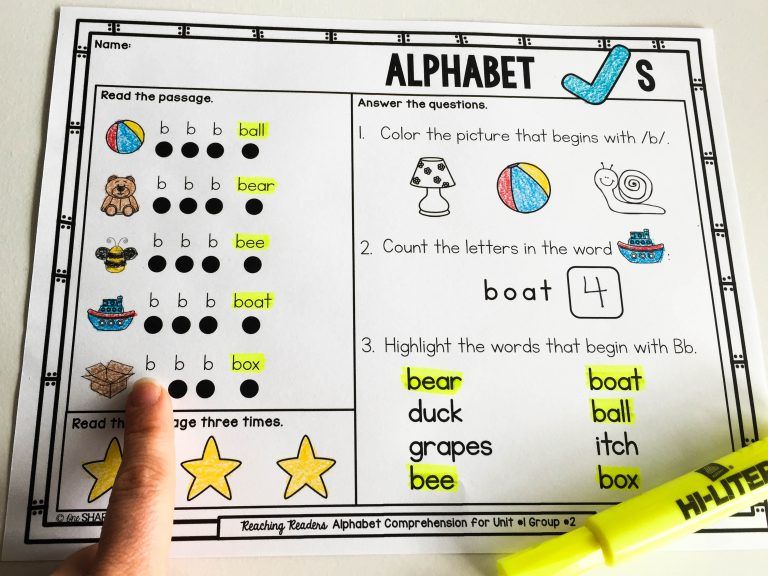
For weekly activities: Preschool Mom
19. Do the yoga alphabet
Show kids this video and take the time to learn each yoga pose. Connecting the mind and the body is great for learning.
20. Sing songs about the alphabet
Everyone loves to sing the alphabet song, but did you know there are lots of other songs to sing that can help you remember the alphabet? Try out this Sesame Street favorite:
21. Draw pictures from letters
Using letters as a starting point, teach kids how to draw. If this is too difficult at first, just write a letter and then draw a picture around the letter.
Learn more: Felt Magnet
22. Highlight letters on a page
Print a page of text or grab your favorite magazine and a highlighter. Ask kids to highlight as many of one letter as they can find. This is also great for sight word recognition.
Here’s a freebie from The Inspired Apple to get you started.
23.
 Do-A-Dot letter tracing
Do-A-Dot letter tracingThese dot markers make tracing letters more fun and help kids with directionality and remembering how to write and recognize letters.
Free Dot tracing sheets: DTLK’s Educational Activities for Kids
24. Play letter slap
Make 2 sets of index cards with all the letters on them (52 cards in all). Shuffle the cards together and deal them so each kid holds 26 cards. Together each player takes their top card and turns it upright. The player with the letter closest to A wins the hand and takes the card. If two of the same letter are played, the players slap the card. The one on the bottom of the slip wins the hand. The game ends when one player holds all the cards.
25. Match plastic Easter egg letters
Surely you have some plastic Easter eggs hanging around your attic. Use a Sharpie or letter stickers to put an uppercase letter on one half and a lowercase letter on the other. Then separate the two and throw them all in a basket.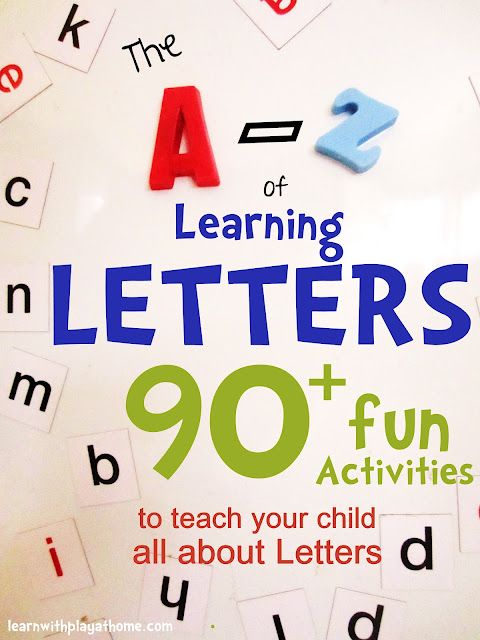 Kids pull them out and match them up. Tip: Add difficulty by not coordinating the colors.
Kids pull them out and match them up. Tip: Add difficulty by not coordinating the colors.
Learn more: Crystal and Co.
26. Create loose part letters
What are loose parts? Loose parts are exactly what they sound like—a collection of loose materials or objects. These can be small pebbles, bottle caps, random LEGO bricks, seeds, keys, anything. Draw big letters on a piece of paper and have kids line up loose parts to make the letter.
Recognizing letters is a fundamental part of learning how to read. Without it, children struggle to learn letter sounds and identify words. Beginning readers who know their alphabet have a much easier time learning to read. Making alphabet practice a part of every day in fun ways helps create a lifelong love for letters and words.
What games and activities do you like to use for practicing the alphabet?
Plus, our favorite activities using alphabet beads and the best alphabet books.
15 fun ways to teach the alphabet
How to teach your child all the letters of the alphabet?
Around the age of two, children already begin to exhibit a curiosity about letters and memorize the order in which they appear, so this is a good time to slowly start teaching them the alphabet.
The first step the child needs to overcome is to familiarize themselves with the shape of each letter, and only then can they learn their order by heart. Later, when they start to learn to read, children will begin to distinguish between uppercase and lowercase letters. However, learning to recognize all letters is enough to begin with, and learning the order in which they appear will follow.
15 fun ways to teach the alphabet
It is important to teach your child in a direct and illustrative way which is age-appropriate and relatable to them. Some children master the alphabet immediately, while others need more practice and repetition.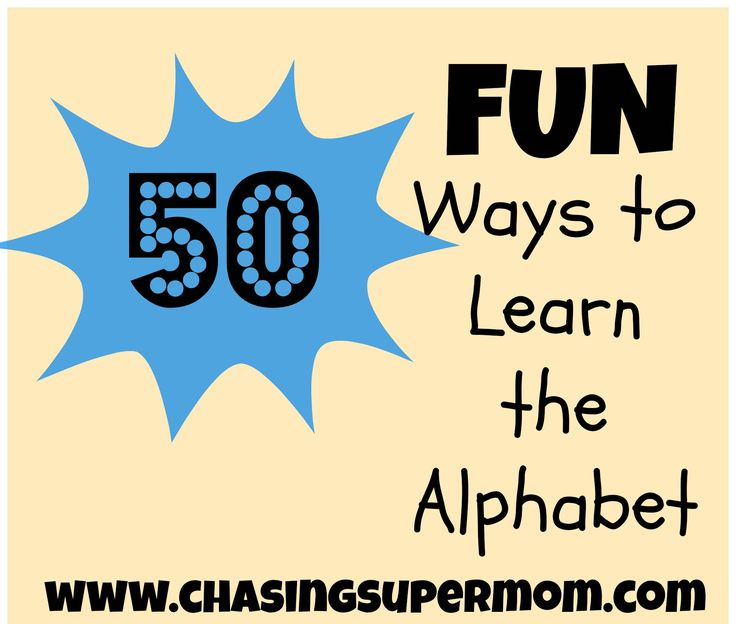 It doesn’t matter if your child belongs to the former or the latter group, you need to be patient and try to make the learning fun so that they don’t become stressed and develop an aversion toward letters and words.
It doesn’t matter if your child belongs to the former or the latter group, you need to be patient and try to make the learning fun so that they don’t become stressed and develop an aversion toward letters and words.
The following games will help you with that:
1. Use alphabet blocks
Colorful blocks with letters are a great way for toddlers to simultaneously learn the alphabet and develop their motor skills, such as gripping, holding and moving. When your child is older, ask them to arrange the blocks in alphabetical order, to write their name using blocks, and later, some more complex words. Start with shorter and simpler words and help them to progress to longer and more complex ones.
2. Play ABC songs
Children love songs, and it has been proven that songs help them adopt new knowledge. Whether they are learning their mother tongue, or a second language, one of the basic methods for learning the alphabet are ABC songs. Find an appropriate song and play it for your child, you will see that they will soon learn it by heart, and thus the alphabet as well.
These songs are useful because, in addition to music and lyrics, they also have a video in which the shape of each letter is shown so that the child will simultaneously learn how a letter looks, and how it is pronounced.
In addition to simple songs where each letter has a corresponding tone, another great method to help your child master the alphabet is to use songs that introduce the letters of the alphabet and words that begin with each of the letters. You can find a number of these songs online, play some of them to your child, and they will soon ask you to play the one they like the most again.
3. Read alphabet books
Children love stories and one of the most efficient ways to adopt knowledge in early childhood is through storytelling, so children will best learn the alphabet from books. Get one of many ABC books for learning letters and read them to your child over and over again. The child will have fun and after a few readings, they will begin to memorize letters of the alphabet.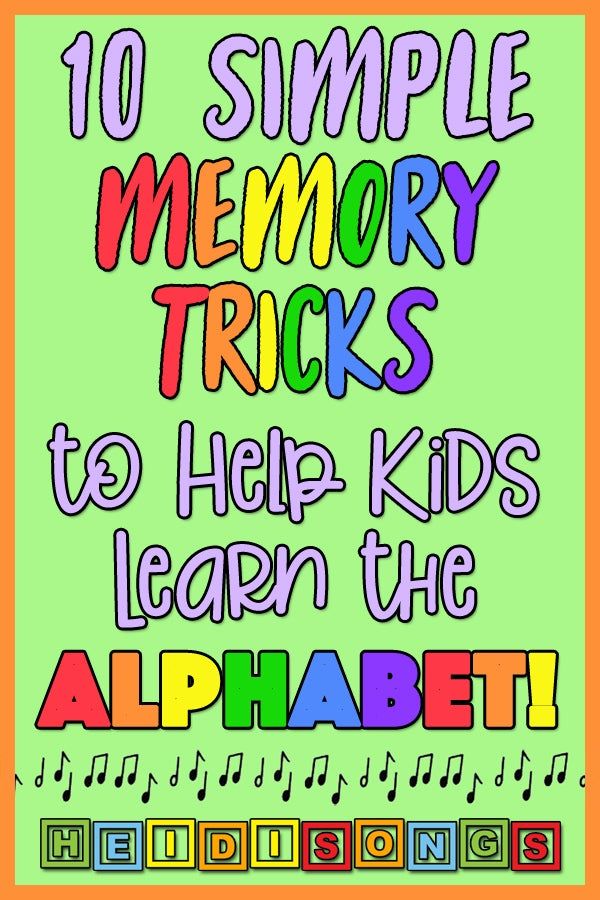
4. Have your child learn the alphabet from coloring books
Coloring books are another great tool for learning the alphabet. You can find a large selection of specialized coloring books for learning the alphabet in bookstores. In addition to learning the alphabet, the child will also learn about shapes and colors, developing fine motor skills such as coloring with precision, and having fun in the process.
5. Picture alphabet or alphabet learning charts
Another great way to learn letters are illustrated charts containing every letter of the alphabet with a picture of an object or an animal the name of which begins with that letter. This way, your child will simultaneously learn letters and new words, i.e. master the picture alphabet. There are also alphabet paired cards where you place all the cards face down and then reveal one by one, matching the pairs. As the child improves their command of the alphabet, you can give them more complex cards containing two letters for example: AB, and the child should continue the letter sequence, adding the letter C in this case.
The ability to recognize letters on the flash cards is one of the indicators of how your child will later adopt more complex skills, such as reading and writing.
6. Use different devices
Video games or educational toys are also a great way to learn the alphabet. For example, there are toys where each button represents a different letter and an animal the name of which begins with that letter, so when the child presses the button, they will hear the sound the said animal makes. This way, the child will learn letters, words, types of animals, and sounds they make.
7. Visit interactive ABC websites
You can find several ABC websites online. By pressing a button, the child will see an illustrated list of words that begin with that letter. This is particularly amusing for children, because they become active participants in the learning process by choosing which letter to press, while at the same time learning new words with the help of illustrations.
8. Be creative
A great way for you to teach your child the alphabet while having fun together is to use stickers. You can choose stickers in 30 different colors to match each letter. Write a letter of each sticker and then post them in the appropriate order on the wall of the child’s room. This way, the alphabet will be visible at all times, and the child will memorize it with ease.
9. Alphabet puzzle
Another great method for learning the alphabet involves alphabet puzzles. Pieces of these puzzles are made of letters and illustrations of objects that begin with each letter, and the child’s task is to put the puzzle back together. This is a particularly effective learning technique because it combines tactile and visual skills, while also enabling your child to develop their vocabulary.
10. Point out different letters when you are outside with your child
Learning the alphabet doesn’t have to be a strictly indoor activity carried out with the use of different educational tools.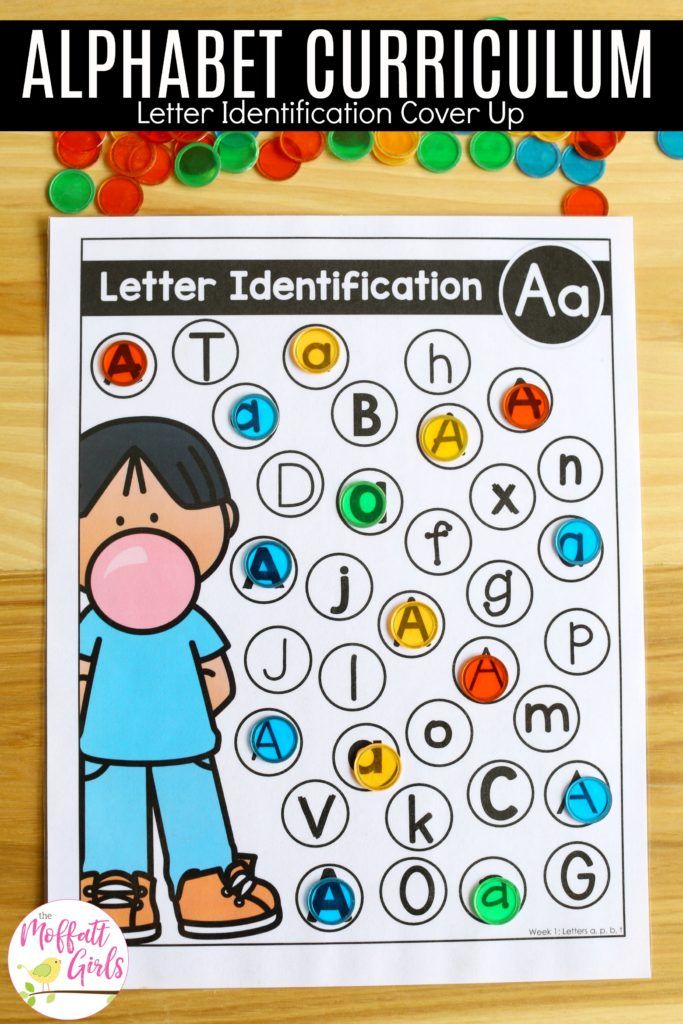 Before they start school, children are extremely curious about the world and easily learn new things, so use this opportunity to teach them the alphabet. When you take your child to the shop, park or playroom, point out different letters you see along the way and ask them to identify them.
Before they start school, children are extremely curious about the world and easily learn new things, so use this opportunity to teach them the alphabet. When you take your child to the shop, park or playroom, point out different letters you see along the way and ask them to identify them.
11. Surround the child with letters
A great way to teach your child the alphabet is to integrate letters into their daily activities. If your child likes to play with toy cars, make racing tracks for them in the shape of letters and ask the child to identify the letters while playing. In addition, you can arrange the child’s meals in the shape of different letters, and ask him/her to identify them before they start eating. This way, your child will unconsciously pick up the alphabet while doing other things they enjoy.
12. Have the child write letters in the snow or sand
When you go to the mountains, or the beach, your child can have fun while learning something useful at the same time.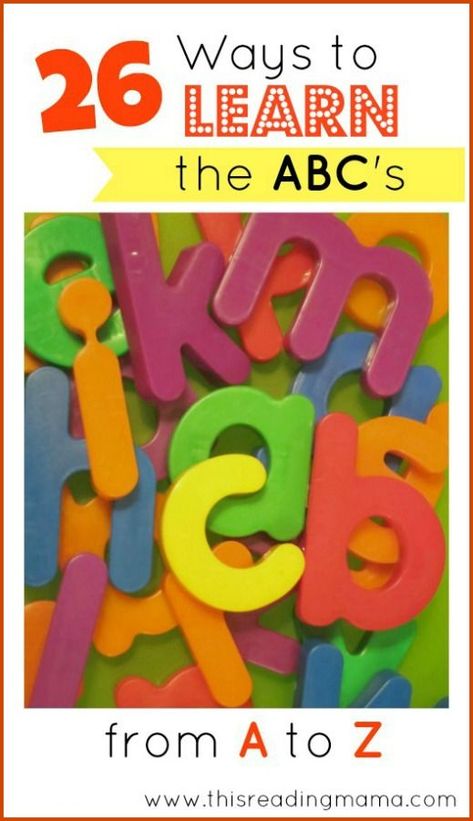 Encourage them to write one letter every day in the snow or sand. They can be giant letters or small ones, depending on what your child likes.
Encourage them to write one letter every day in the snow or sand. They can be giant letters or small ones, depending on what your child likes.
13. Bake letter-shaped cookies
Children like to get dirty, so it is no wonder they enjoy playing with dough. This is also their way of participating in adult activities, and helping their parents. Buy letter-shaped cookie molds and bake cookies with your child which you can also decorate together. Learning the alphabet this way will not only be fun, but tasty too. Bon appetit!
14. Introduce your child to uppercase and lowercase letters
As your child improves their knowledge of the alphabet, at some point, you should introduce them to uppercase and lowercase letters. Show them how each of the letters should look like, and then play a game. Buy, or make your own paired cards with uppercase and lowercase letters and ask the child to put the pairs together.
15. It is time for cursive alphabet
In addition to the print alphabet, the child should also learn the cursive alphabet, so you need to explain the difference between print and cursive letters, and compare them to each other. After that, you can play a game where the child needs to match a print letter with their cursive equivalent.
After that, you can play a game where the child needs to match a print letter with their cursive equivalent.
Be patient and have fun
Learning new things should, above all, be a fun and stress-free process. At an early age, children mostly learn from their parents, so use this period to watch them grow up and have fun together discovering new and interesting things that surround them. Be patient, supportive and motivate them, because this early stage of knowledge acquisition will have a great impact on their attitude toward learning when they are older.
So, have fun, laugh and enjoy the ABC journey together!
10 Fun and Tasty Ways to Learn the Alphabet with Your Child — Parents.ru
Development
- Photo
- FatCamera/Getty Images/E+
Tasty Science
than any other word. Help your child memorize the spelling of letters faster.
 To do this, you can involve him in the preparation of cookies in the form of the alphabet. Cut the dough into small strips and make letters out of them with your child. After the cookies are ready, the kid can independently decorate them with colored icing, coconut flakes or sprinkle with powdered sugar. nine0003
To do this, you can involve him in the preparation of cookies in the form of the alphabet. Cut the dough into small strips and make letters out of them with your child. After the cookies are ready, the kid can independently decorate them with colored icing, coconut flakes or sprinkle with powdered sugar. nine0003 Eat us!
Using a silicone letter ice mold, you can make homemade gummies from juice or berries. It is prepared simply, but how much joy it will bring to the little sweet tooth! Delicious, healthy and informative - what could be better?
Beneficial snack
If you like to cook, you can also bake crispy biscuits (such as crackers) and squeeze a letter on each before baking or top them with raisins. You can have such cookies during homework, at the same time repeating the learned alphabet. Fast and tasty - just what you need! nine0003
Bring letters to life
To make letters memorize faster, play association games with your child. For example, invite him to lay out the letter “P” from millet or “G” from peas. Thus, while playing, the child not only learns the alphabet, but also develops fine motor skills.
Thus, while playing, the child not only learns the alphabet, but also develops fine motor skills.
- Photo
- Catherine Falls Commercial/Getty Images/Moment RF
Learning, Playing
Fun Serving
As a child, each of us had such wooden cubes, on each side of which letters were written. They can also be used when setting the table, when the whole family gets together. For example, a child might put their parents' names next to their plates. Of course, if the baby is very small, you can’t do without the help of your mother. But after several such “trainings”, he will be able to make names himself. nine0003
Fun coloring book
Find online and print (or buy) an alphabet coloring book. Each letter is accompanied by a word and its image (“D” is a dinosaur, “R” is a rocket). When you decide to start learning the alphabet, let your child learn one letter each day.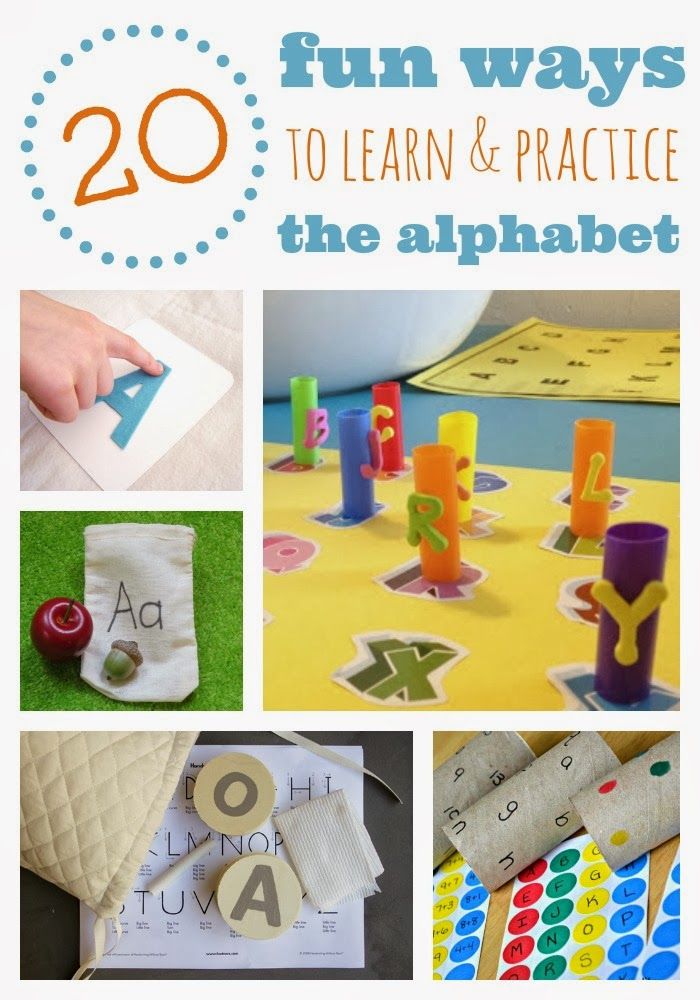 So, knowledge will be consolidated faster, and the baby will not get confused in the abundance of new information. You can take these coloring pages with you when you travel: just remember to take a set of colored pencils.
So, knowledge will be consolidated faster, and the baby will not get confused in the abundance of new information. You can take these coloring pages with you when you travel: just remember to take a set of colored pencils.
Everything is useful in the household
Take advantage of your childhood love for stickers and turn them into another way to learn the alphabet. These "alphabetic" stickers come in hundreds of colors and sizes. You can buy them at children's or craft stores. Where can they be pasted? Use stickers in the household: let the child “write” jars of cereals, pasta and sugar with them.
DIY
Decorate the walls
Together with your baby, make a beautiful panel using the letters of the alphabet that will surely decorate the walls of his room. Cut out letters from multi-colored paper, cardboard or foil. Then glue them on a pre-prepared "canvas" in a chaotic manner. Dream up and think about how you can decorate the resulting masterpiece: you can put prints of children's fingers or pens, draw animals whose names begin with the letters that are shown on the panel, or stick sparkles, confetti and sequins. nine0003
nine0003
With a thread in the world
Together with your child, you can make letters from scrap materials. For example, from the remnants of woolen threads and floss. Cut out the letters from cardboard so that they are large enough (this will make it much easier for the child to perceive new information). Then wrap them with multi-colored threads, and hide the knots on the back. Such letters can be hung over a crib. You can combine multiple colors on one letter, or make each letter a different color. Collect beads and beads on threads or make a zigzag pattern on the letter. In a word, connect your imagination! nine0003
- Photo
- MAIKA 777/Getty Images/Moment RF
Consider the nature of
Every child is special
Remember that when teaching the alphabet to a child, it is necessary to ensure his interest in a new activity.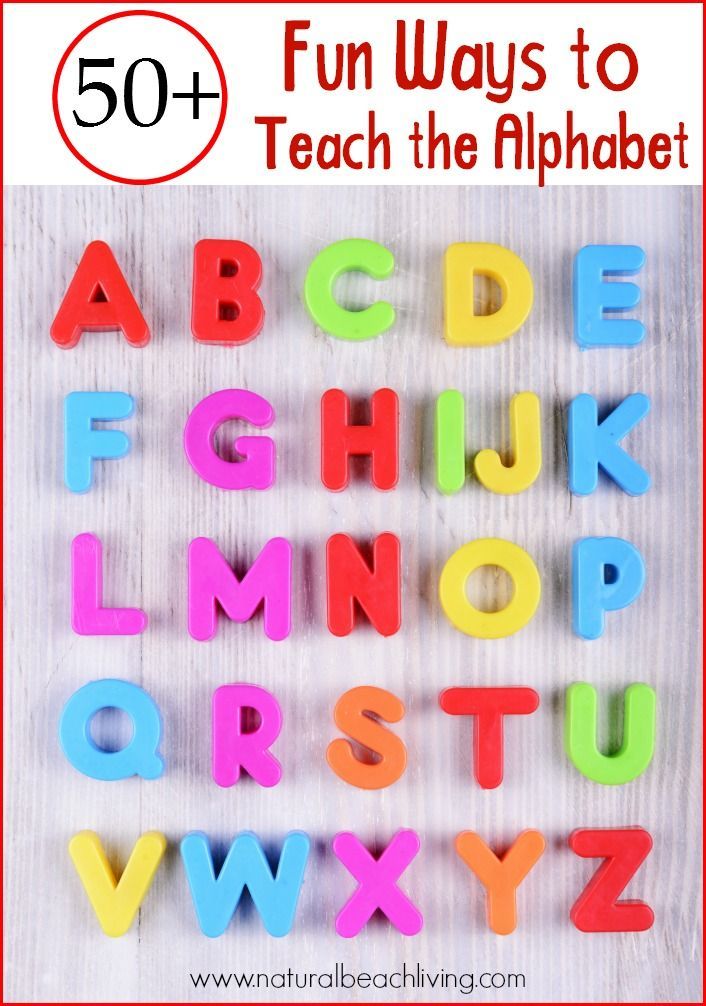 But the individual characteristics of the baby also play an important role, so they must be taken into account. For example, if your child is visual, you can purchase a magnetic board with magnet letters. If the crumbs have a well-developed auditory memory, then it is better to buy a “speaking” alphabet: now there is a huge selection of music books for different tastes in stores. nine0003
But the individual characteristics of the baby also play an important role, so they must be taken into account. For example, if your child is visual, you can purchase a magnetic board with magnet letters. If the crumbs have a well-developed auditory memory, then it is better to buy a “speaking” alphabet: now there is a huge selection of music books for different tastes in stores. nine0003
More useful materials about child development - in our channel on Yandex.Zen.
Lyudmila Kleymenova
Reading today
Literacy test: do you make mistakes in these New Year's words and greetings?
Designer interior and dad’s photo on the shelf: Sobchak showed two children’s rooms in the house
Dad’s daughter: Shiloh Jolie-Pitt changed her image and became a copy of her father0003
Calculate your year: what awaits you in 2023 - forecast by date of birth
5 ways to easily and quickly learn the alphabet with a child of 3-6 years old - Somersault
Before learning the alphabet with a child, it is important to understand what you are not will do. Namely, learning to read. This is a more complex skill, so it is worth putting it off until the time when the child gets acquainted with all the letters and will confidently recognize them and write on their own. Until then, put off the alphabet and reading by syllables.
Namely, learning to read. This is a more complex skill, so it is worth putting it off until the time when the child gets acquainted with all the letters and will confidently recognize them and write on their own. Until then, put off the alphabet and reading by syllables.
In this article, we have put together the basic principles to quickly learn the Russian alphabet with a 3-6 year old child in a playful way. For all games with letters, you can use plasticine, paints and any improvised means or magnetic letters ROOM - they will easily attract the child's attention.
Contents:
- Learn the Alphabet Easily: Basic Principles
- 5 ways to learn the alphabet with your child
- From alphabet to reading
How to Learn the Alphabet Easily: Basic Principles
Each child can find an easy way to learn the alphabet that suits him or her, but there are basic principles that are important for all children. If you do not follow them, study will turn into drill and the child is unlikely to ever love to read. Here are a few such principles on how to properly learn the alphabet for a child.
If you do not follow them, study will turn into drill and the child is unlikely to ever love to read. Here are a few such principles on how to properly learn the alphabet for a child.
- Learn sounds first, not letters . At the first stage of learning, it does not matter how the letters in the alphabet are called correctly. Now only sounds are important for the child - "d", and not the letter "De". The names of the letters will only confuse the child, who first needs to learn to recognize the shape of the letters and their sound. nine0106
- Not learning the alphabet in the correct sequence . Until a child goes to school, it is of no use to him to know how the letters are arranged in the alphabet. This information will only distract him from what is really important: how the letters look and sound. The sequence of the alphabet can be learned later or even at school, where this knowledge will be tested by the teacher.
- Do not turn learning into a lesson .
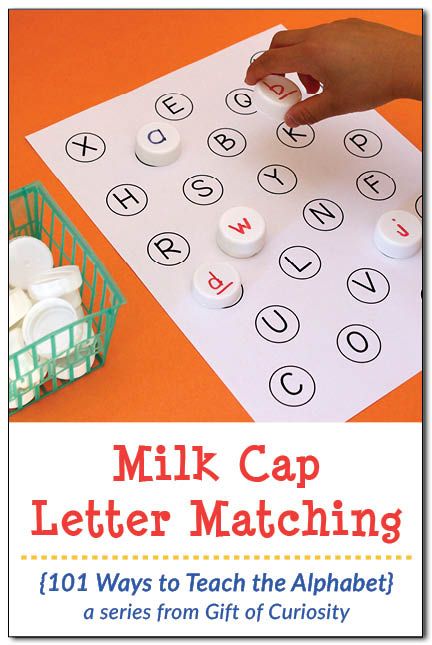 Learning from call to call is difficult even for children at school, let alone a baby. Therefore, all learning should take place in a playful way and not for long: 5-7 minutes a day to get acquainted with the letters will be enough. Gradually, this time can be increased, especially if the child likes the proposed games with letters. nine0106
Learning from call to call is difficult even for children at school, let alone a baby. Therefore, all learning should take place in a playful way and not for long: 5-7 minutes a day to get acquainted with the letters will be enough. Gradually, this time can be increased, especially if the child likes the proposed games with letters. nine0106 - Use material objects . At the age of 3-6 years, the child learns the world by touch and taste. It is difficult for him to work with abstract letters spoken aloud. Therefore, it is better to stock up on plasticine and paints and create letters that are more understandable to the child and can be touched. Such a game for children will allow the child to learn the letters of the alphabet and he will recognize them in different forms regardless of what they are made of.
- First vowels, then consonants . Vowel sounds are easier to pronounce, so it's worth starting with them. nine0106
The main thing is not to force anyone.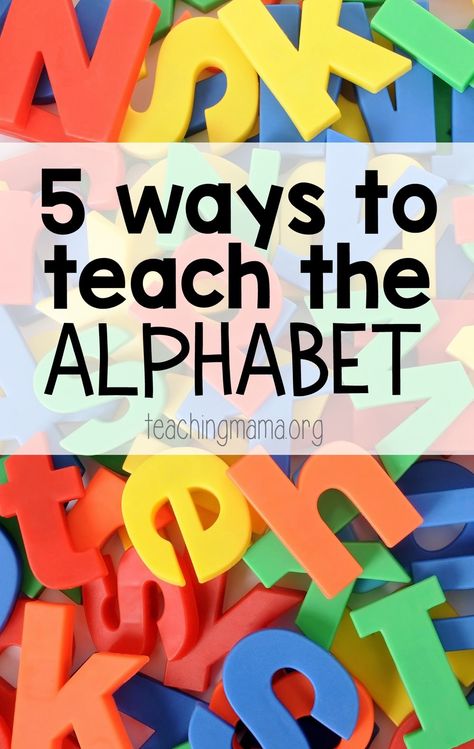 If you see that the child is inquisitive, enjoys exploring the world and is ready to learn, you can move on to learning letters and the alphabet. So the child will be happy to learn the alphabet in a playful way and gradually learn to read. So that the game is not abstract, you can use the magnetic letters TUMBLING.
If you see that the child is inquisitive, enjoys exploring the world and is ready to learn, you can move on to learning letters and the alphabet. So the child will be happy to learn the alphabet in a playful way and gradually learn to read. So that the game is not abstract, you can use the magnetic letters TUMBLING.
5 ways to learn the alphabet with your child
1. Use an interesting topic to study
Use your child's interest to spur his motivation to learn. For example, if your kid is crazy about cars, let them be the topic in which you learn the alphabet. Use any words related to cars:
"A" - bus
"B" - trunk
"C" - driver, etc.
You can show cars and their parts, draw or sculpt from plasticine. It is important that the child's focus shifts from learning to doing what they love. Additionally, the method will help expand vocabulary and knowledge about the world.
2. Cross out a letter of the alphabet in the list
Fill in a small square with arbitrary letters. The task is to cross out only the letter that you are studying. This will help the child focus on one letter and not get distracted by the ones he doesn't remember or don't know. nine0003
3. Take out the letters of the alphabet from the pouch
The soft-touch magnetic letters are perfect for this method. Put the letters in a bag and give the child the task, without looking, to pull out only the letter that you thought of. Let there not be too many letters in the bag, otherwise the child will get confused. 6-7 pieces will be enough. To start, use letters that are very different in shape, such as "O" and "M". Gradually, the complexity can be increased and searched among similar letters, for example, "K" and "X". Don't forget to praise and encourage your child. You can alternate the learning process with desktops. nine0003
4. Recognize letters of the alphabet by ear
You pronounce a word, and if it contains a hidden letter, the child claps his hands.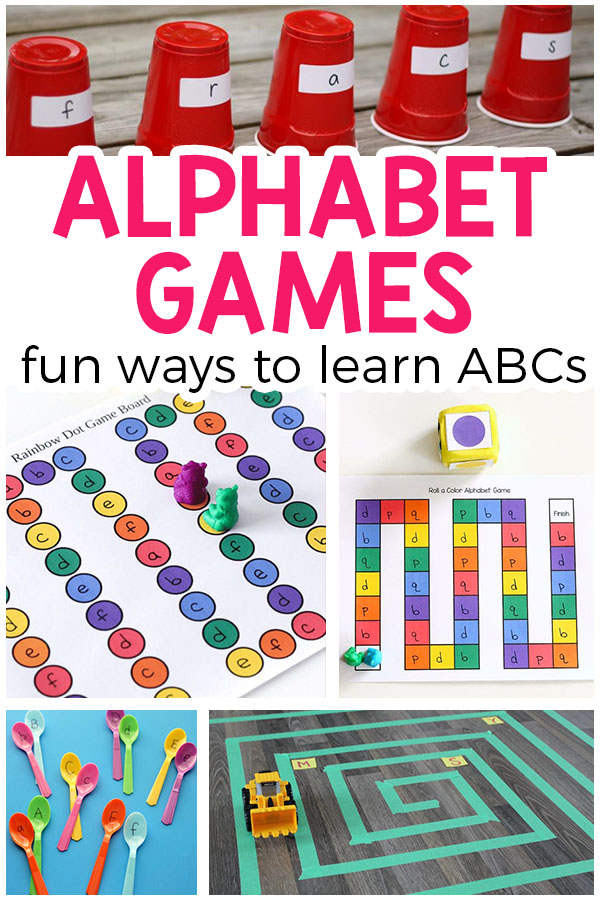
With this game for kids, you can learn individual letters or the entire alphabet. For example, you name a word, and the child inserts its first letter into the insert frame. To stimulate your child's interest, you can use only words from his favorite topic, for example, the names of animals.
5. Guess words starting with the first letter
You choose one letter and think of a word that starts with that letter. For example, the letter "Z":
- What is this animal with big ears and loves carrots?
- Hare!
This game form is again suitable for learning individual letters or the entire alphabet. If you learn only one letter, the child gets used to quickly recognizing it in different words. And if you give words with different letters, the child as a whole learns to understand with which letter they begin. With the study of the account and the English language will also help TUMBLING.
From the alphabet to reading
When a child learns the Russian alphabet, confidently recognizes all the letters in different words and can draw or mold them on his own, it is worth moving on to reading.